Top 10 Places & Ruins to See in Petra, Jordan
Wondering What to See in Petra? Don’t Worry, I Got You Covered!
In the southern part of Jordan, in a town called Wadi Musa, you find the rose city of Petra. This archaeological and historical city is famous for its rock-cut architecture and is one of the New 7 Wonders of the World.
Covering an area of 264 square kilometers, Petra is home to a vast array of tombs, temples, and other structures that are carved into the rose-red cliffs.
If you want to explore the entire site because you have a deep interest in archaeology and history, you’ll most likely need a couple of days.
However, don’t worry if you’re short on time because, for example, you planned Petra only as a day trip from Amman. The most iconic sights can be easily seen in a day as most of them are located along the main trail.
(This post contains affiliate links, which means I receive a certain percentage of a sale if you purchase after clicking.)
Btw, if you have the chance, I would still recommend staying at least one night near Petra as it has many perks. We booked three nights at the Mövenpick Resort Petra and it was fantastic!
Anyway, as already mentioned, you can see a lot in one day only and to ensure you don’t miss anything, I’ve compiled this post listing all the best places and ruins to see in Petra.
Happy exploring!
TIP: Before you travel to Jordan, I highly recommend buying the Jordan Pass. It includes a tourist visa with FREE entry to more than 40 tourist sites such as Petra.
Tours you might find interesting:
Best Sights to See in Petra Along The Main Trail
1. Obelisk Tomb & Bab as-Siq Triclinium
The first ruins you’ll notice right after entering the site through the visitor center are the Obelisk Tomb and the Bab as-Siq Triclinium on the left side of the main trail.
Carved into the rose-red cliffs, the Obelisk Tomb stands out for its unique design, featuring four pyramidal obelisks, hence its name.
At first glance, the tomb appears to be two-story. In fact, it was constructed atop a building known as a triclinium (dining room) which is one of several in Petra.

If you’re now wondering why someone would build a tomb on top of a dining room, well, here’s the answer: People used to have yearly feasts here to commemorate those who had passed away.
Although it’s difficult to imagine lively banquets in the now quiet and empty space …
2. The Siq
Following along the main trail you’ll soon approach the Siq, the official entrance to the ancient city.
Carved by the elements over thousands of years, this narrow, winding gorge features towering cliffs that reach up to 200 meters in height, creating a mesmerizing pathway into the heart of Petra.


Along the way, you’ll notice water channels and niches carved into the rock face on both sides that were once used to carry drinking water into the city.
Once you reach the end of the 1.2 km-long gorge, get ready for the treasure hidden behind the towering walls to be finally revealed to you – in the true sense of the word.

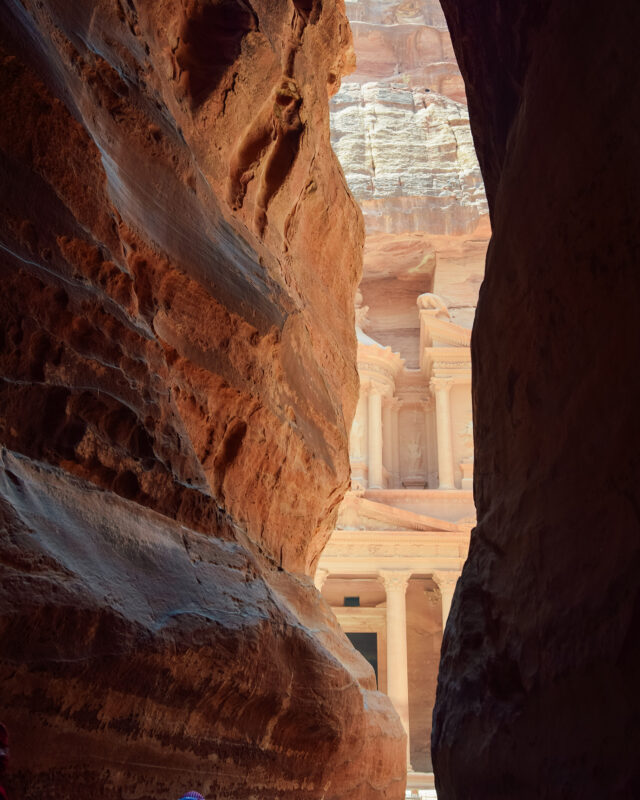
3. The Treasury
Upon leaving the Siq, you will find yourself standing directly in front of the Treasury, also known as Al-Khazneh.
As the first significant structure encountered after the journey through the narrow gorge, the Treasury stands as a testament to the grandeur of Nabataean architecture and is thus one of Petra’s most famous sights.

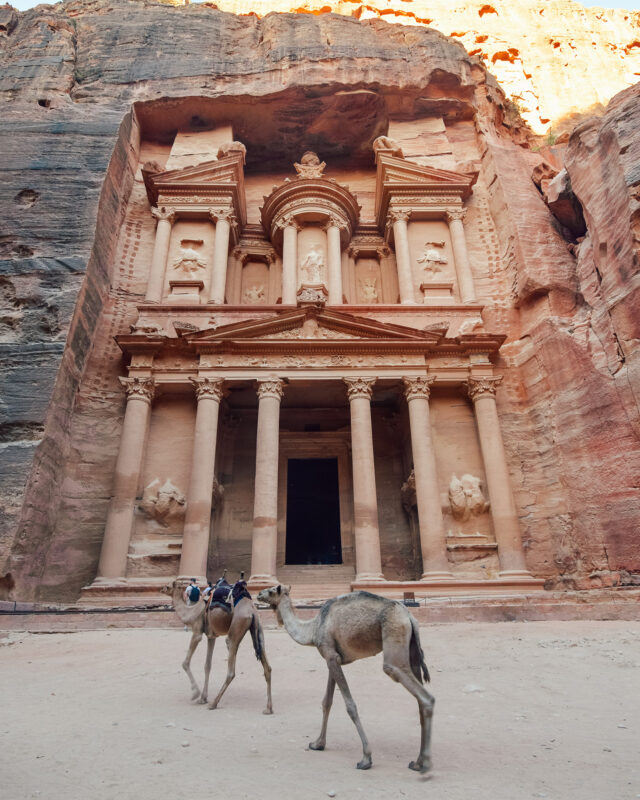
Carved into the rose-red cliffs, the stunning building features a facade with intricate details and symbolic elements, towering columns, and a decorated urn on top.
It’s assumed that it served various purposes throughout history, including potentially acting as a mausoleum or a ceremonial temple.
4. Street of Facades
If you follow the path to the right and past the treasury, the trail gradually widens into the Street of Facades.
As the name indicates, it’s a street flanked by several outstanding tomb facades carved into the rose-red cliffs. It’s believed that many of these tombs served as final resting places for important individuals in Nabataean society.
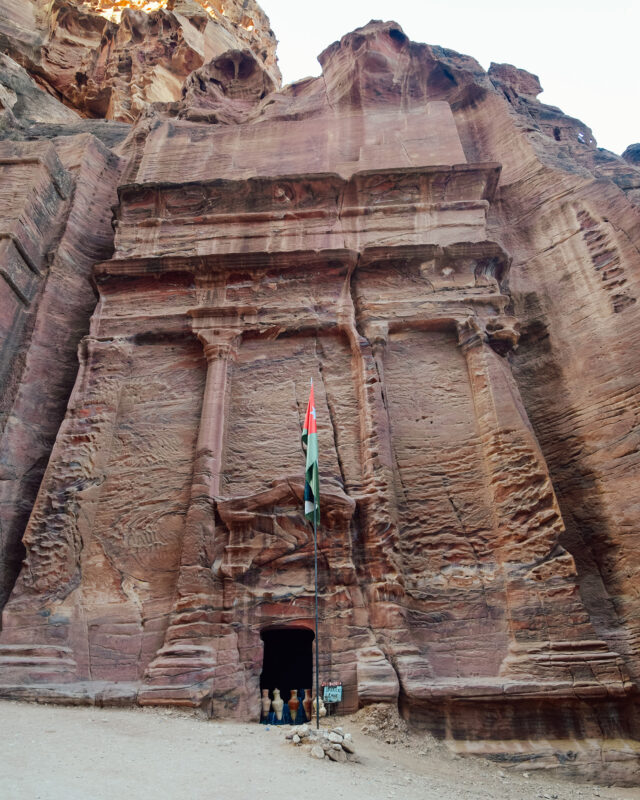

What makes these facades truly special is the combination of their impressive size and intricate ornamentation that can’t be found anywhere else in Petra – at least not that many clustered together.

5. The Theater
Next on the list of things to see in Petra is the theater that is carved into the side of a mountain.
With a seating capacity for thousands, the Petra Theater served as a venue for various performances, gatherings, and civic events in antiquity. Now the only remains left are rows of stone seats and a stage at the base of the seating area.
It’s possible to explore the theater and climb to its top, from where you can enjoy stunning views of the surrounding landscape.

However, if you prefer a good view of the theater itself, I recommend heading to the vantage point located across from the theater.
As you explore the area near the Royal Tombs (our next place on the list), you’ll find a pathway leading to this elevated position.
6. Royal Tombs
While on your way to the vantage point to see the theater, you’ll come across the Royal Tombs, a series of large mausoleums.
Carved into the rose-red cliffs, these imposing monuments include the Urn Tomb, the Silk Tomb, the Corinthian Tomb, and the Palace Tomb.
Each tomb exhibits intricate facades adorned with ornate details, showcasing the artistic and architectural skills of the Nabataeans.


7. The Colonnaded Street
If you return and continue your way on the main trail, you will soon come across a special section of it. I’m referring to The Colonnaded Street, an ancient street that is lined with rows of well-preserved columns on both sides.
Flanked by remains of the market area and the ruins of the Great Temple, the Colonnaded Street once served as the bustling heart of Petra’s commercial and social activities.
It’s quite easy to imagine the vibrant scenes of daily life that unfolded here while strolling along this historic street.
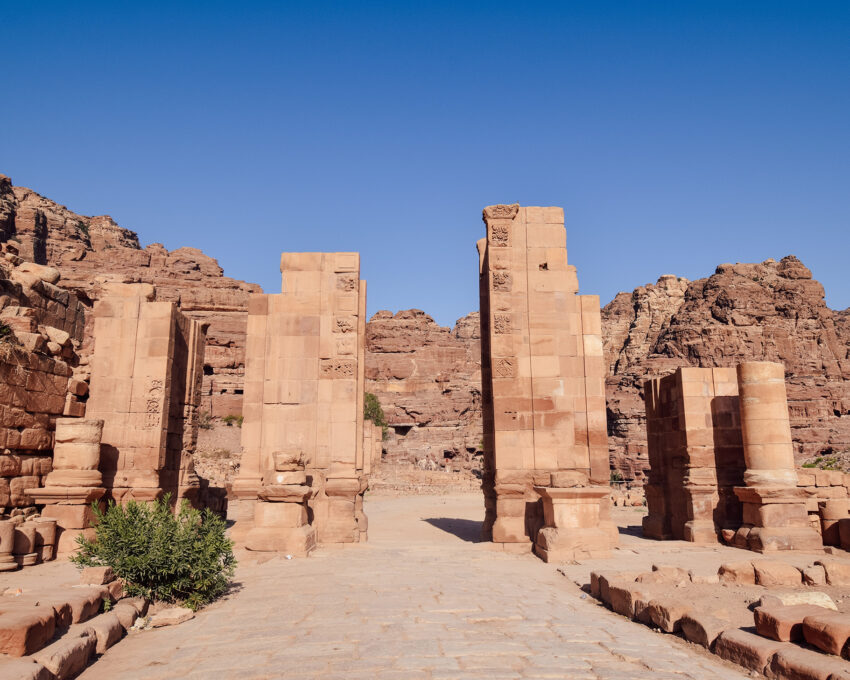
The end of Colonnaded Street is marked by the Temenos Gateway. Originating from the 2nd century AD, this gateway once featured massive wooden doors and flanking side towers.
Its main purpose was to separate the commercial area of the city from the religious temple of Qasr Al-Bint.
8. Great Temple
South of The Colonnaded Street lies the Great Temple, the next impressive ruin to see in Petra. Although it’s named “Great Temple”, it’s unclear whether the complex was a religious or administrative building.
It’s assumed that the temple was once 18m high and the interior was originally covered with striking red-and-white stucco. Unfortunately, most of the temple’s grandeur was destroyed by an earthquake not long after it was built.

Today, you can still explore the remains of its monumental facades, including towering columns and intricately carved architectural details.
Plus, the series of interconnected courtyards provides great insight into the layout of the original structure.
9. Qasr al-Bint
As the best-preserved freestanding structure, the Qasr al-Bint can’t be missed on the list of best things to see in Petra.
The temple’s modern name, “Qasr al-Bint Fir’aun,” means “The Palace of Pharaoh’s Daughter” and was given to it by the Bedouin.
Although there is no inscription or other evidence as to which deity the sanctuary was built for, people assume it was probably the main Nabataean god Dushara.
This assumption is based on the fact that the temple faces north towards a sacrificial altar that was dedicated to Dushara.

10. The Monastery
Last but not least, get ready to be blown away by one of the most breathtaking and largest monuments in Petra: The Monastery, also known as Ad Deir.
Situated high in the hills and only accessible through a scenic yet challenging hike, the Monastery is relatively distant from the other prominent attractions.
To get there, you need to follow a rock-cut path, once the processional route, starting from the Basin Restaurant near Qasr al-Bint. The hike takes about 45 minutes and involves climbing more than 800 steps.
The way to the Monastery is a spectacle in its own right but also pretty exhausting, so make sure to wear comfy shoes and carry enough water.


If you’re wondering whether the effort is worth it, I can guarantee you—it definitely is!
The Monastery looks quite similar to the Treasury but with 50 meters in width and 45 meters in height, it’s far bigger and less crowded, at least that’s how I felt.
Opposite the Monastery is a café where you can sit down, buy some snacks or refreshing drinks, and enjoy the view of the monastery’s stunning facade.
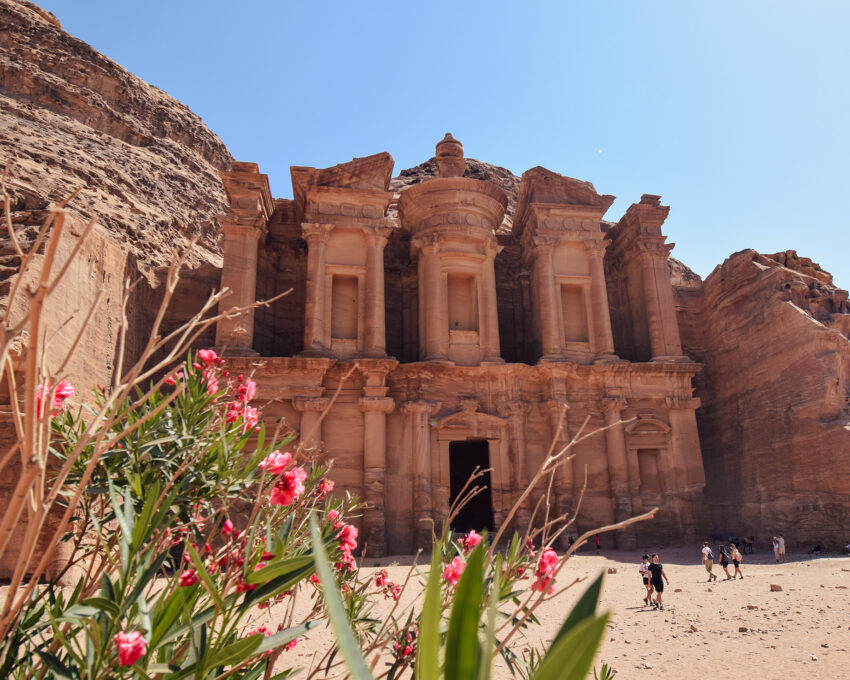
However, for a truly unforgettable experience, I recommend you follow the trail leading from the back of the restaurant to the left.
High up on a rock plateau is a small, roofed place where you can sit down on pillows and enjoy an epic view of the Monastery and the surrounding landscape.
The guy who set that all up is super kind and you don’t need to pay or consume anything. He sells a few sorts of alcohol-free drinks but it’s up to you whether you want to buy something or not.

Final Words & Helpful Tips
As you can see, there are some really worthwhile things to see in Petra that you can easily do in one day. Just make sure to start as early as possible to get the best experience.
We went there at 6:00 am right when the visitor center opened and there were only a handful of other people in front and behind us. Seeing this incredible place almost empty was truly magical!
The way back through all the crowds, on the other hand, was a nightmare …
Also, don’t underestimate the distance you’ll walk that day so make sure you wear comfy shoes, carry enough water, and use sun protection.
You’ll need at least 1-1.5 hours from the visitor center to the Monastery – and that’s if you walk straight there and don’t stop and look at other sights. For reference, we entered Petra shortly after 6:00 am and arrived at the Monastery at noon.
If you can spare more time, check out some of the other hikes such as the one to the High Place of Sacrifice.
Last but not least, please do NOT ride any animals. Most donkeys, horses, and camels in Petra are not treated properly, they’re overworked and subjected to harsh conditions.
Unfortunately, we even observed an incident of animal mistreatment on our way back …
So, for the sake of the animals – and our physical condition – let’s decide to explore Petra on foot!
Tours you might find interesting:
Check out:
12 Important & Useful Tips For Visiting Petra
Where to Stay in Petra
A Complete Guide to Visiting Wadi Rum
Is This The Best Hotel at The Dead Sea?
Like it? Pin it!


Do you want to travel like me?
Here are some of my favorite travel tips and resources:
Flights: I prefer using CheapOair or Skyscanner to book flights. The destination everywhere feature is perfect for finding some cheap deals!
Accommodation: Booking.com is my favorite site to find some great hotel deals. I do love staying at a local place as well, thus I book an Airbnb every now and then.
Travel Insurance: There are many reasons why travel insurance is important and I never travel without having one. I use the simple and flexible one from World Nomads to be protected against unforeseen events.
Tours: I love taking tours to explore destinations like a local. My favorite website to book them in advance is GetYourGuide.
Camera Gear: I use a Nikon D5300 camera with an 18-105 mm and a 10-20 mm wide-angle lens to take my photos.

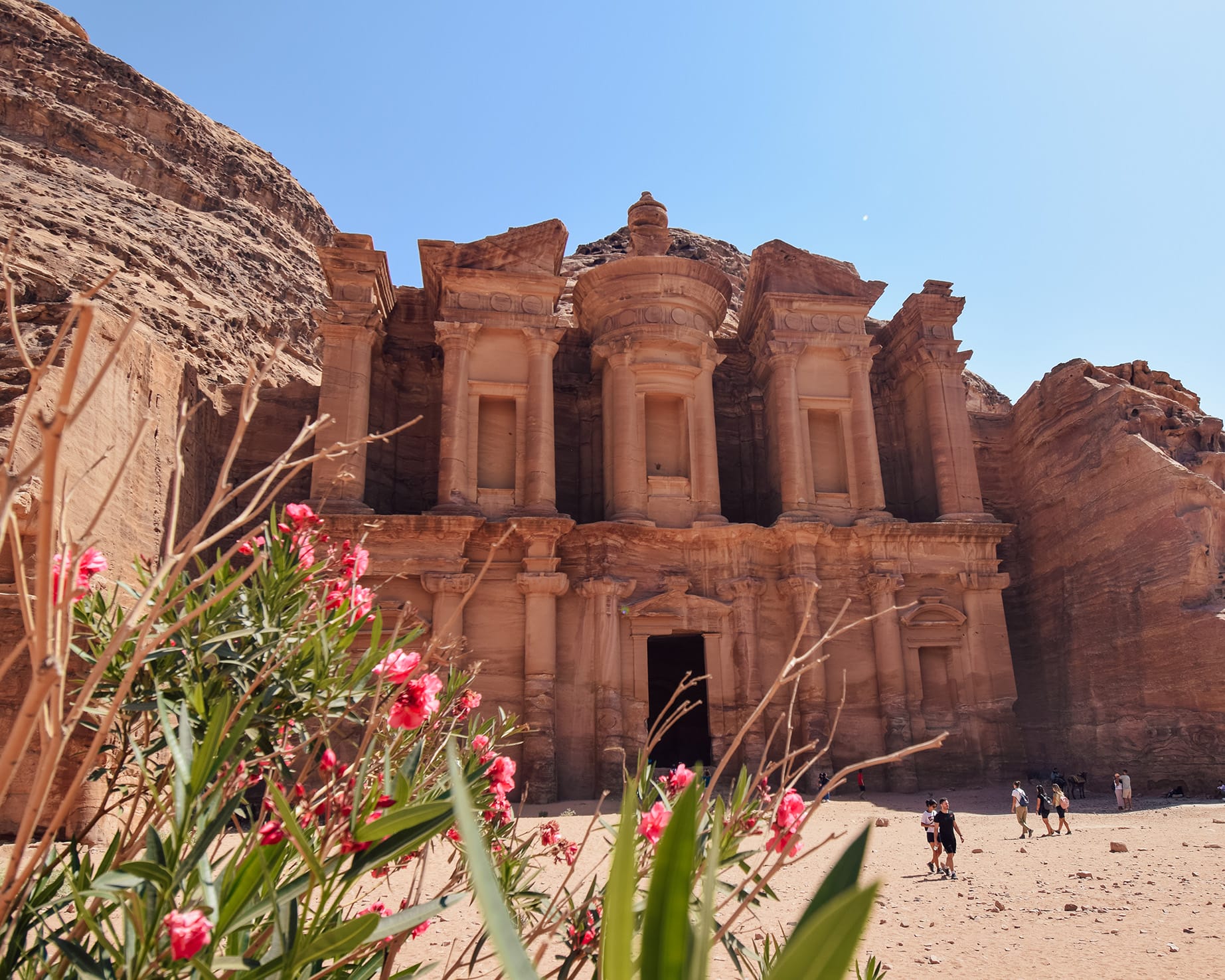
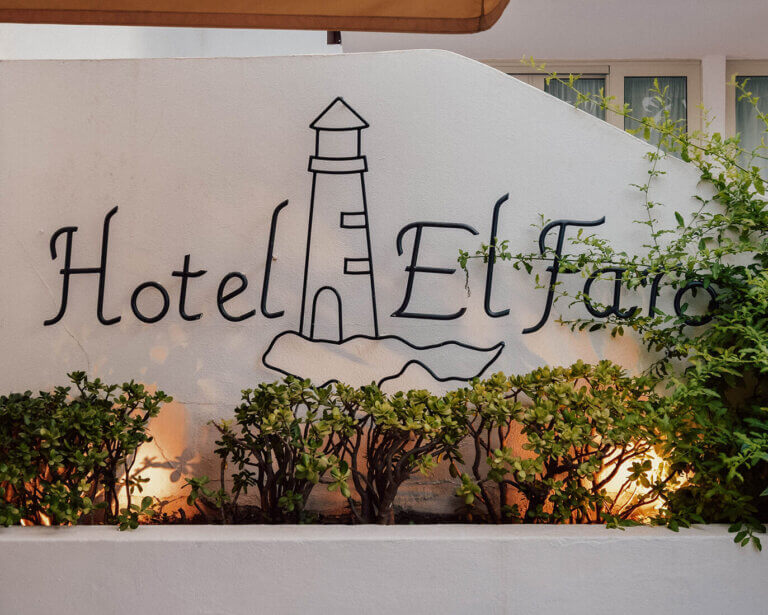
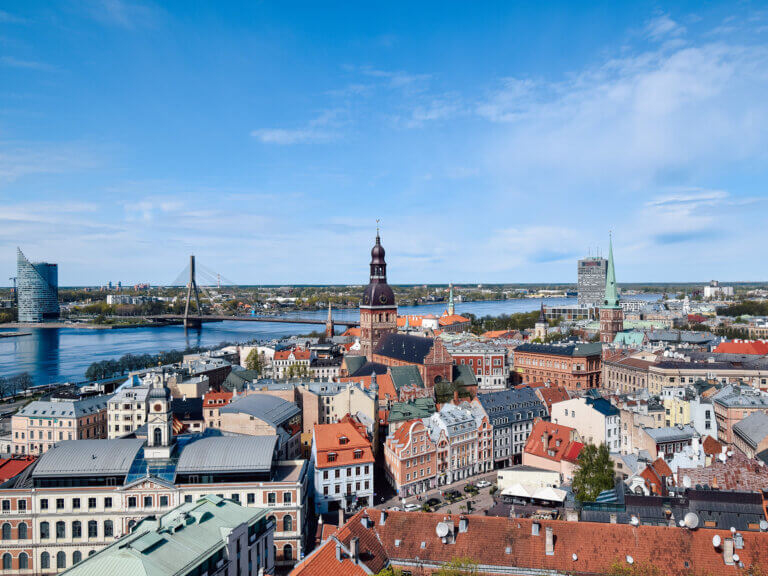
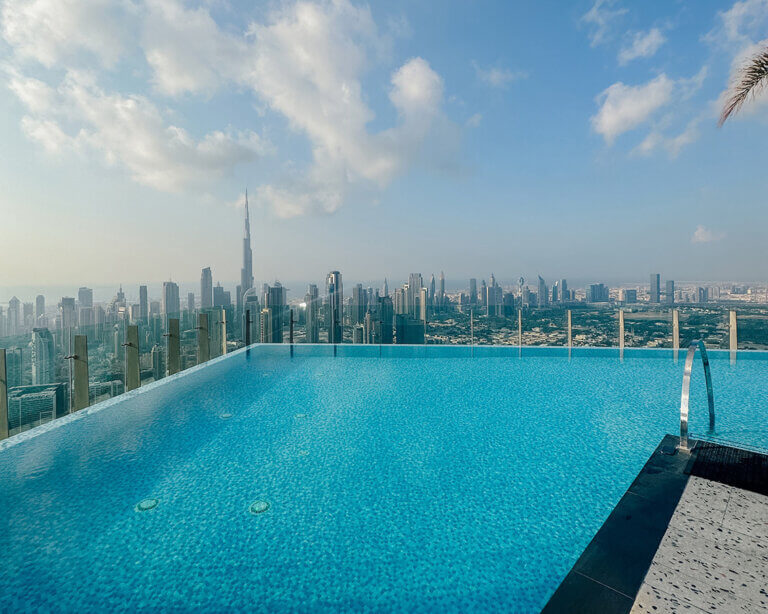
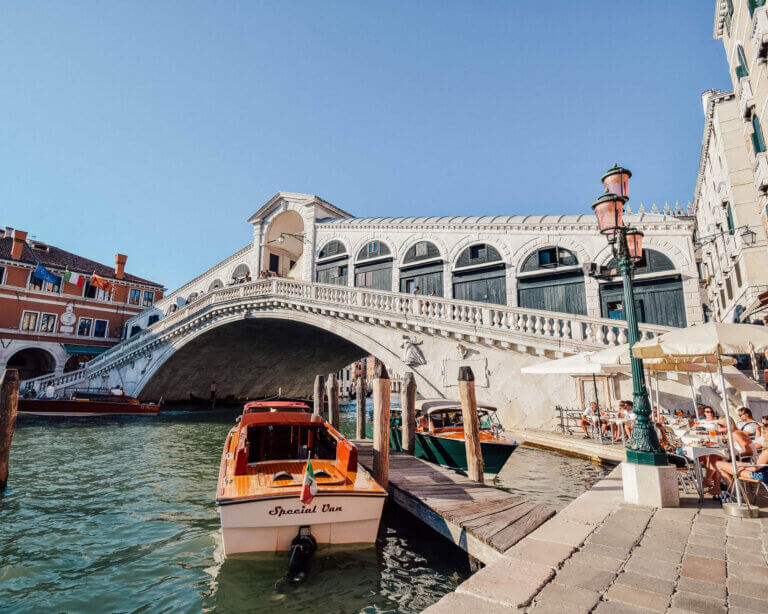
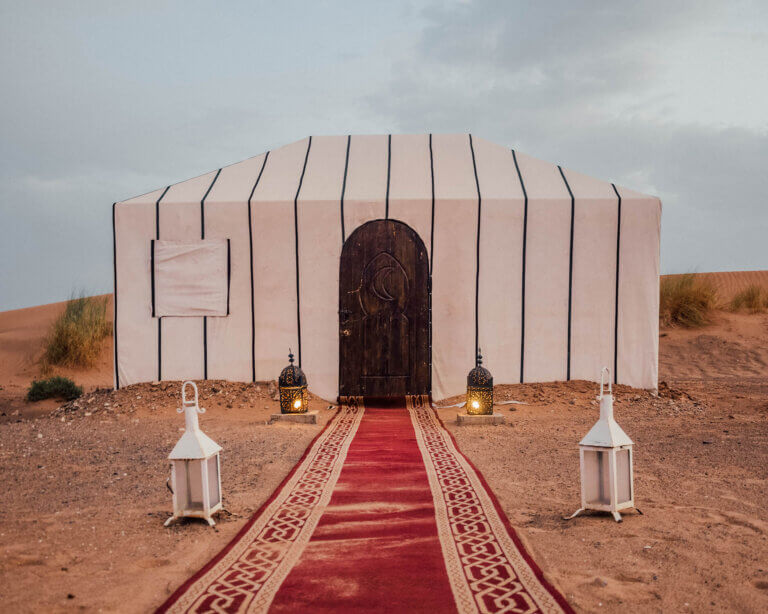
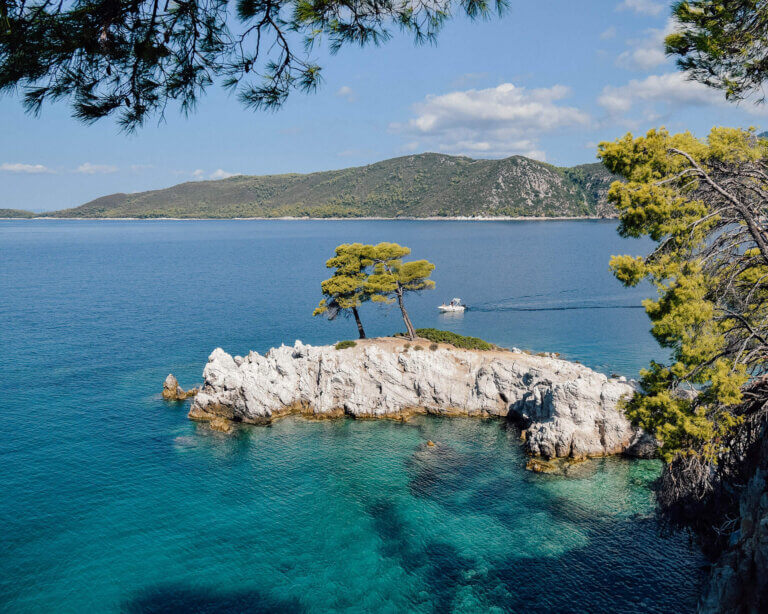
thank you for the informative blog.